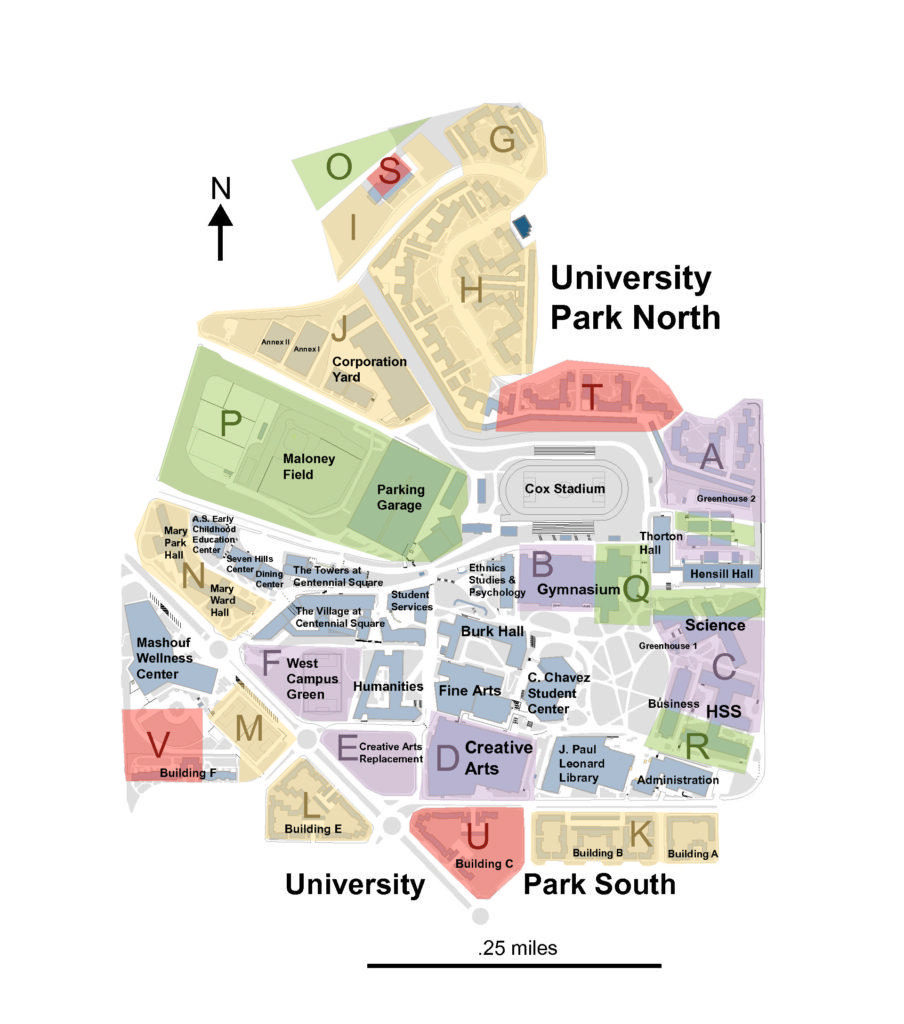INFORMATIONAL MAP BY BRIAN VU/Golden Gate Xpress
Last spring the University announced the Future State Campus Master Plan 2035 in a bid to address a shortage of affordable student housing and update academic buildings and resources.
Many existing campus buildings were constructed over 70 years ago and some members of the SF State community said the master plan fails to address ongoing issues resulting from older infrastructure.
In terms of campus housing, Vice President of University Enterprises Jason Porth said the University cannot currently meet the growing demand.
“If the University’s physical master plan were to be approved, we would be able to house 12,500 students on campus,” Porth said. “We currently house approximately 3,500.”
Residential Hall Association Representative Joshua Ochoa said the plan fails to address critical student concerns.
“They still haven’t addressed if [the new student housing] is going to be affordable, they don’t have any really serious [plans] to address homeless students [and] they haven’t said anything about community kitchens or gardens.”
The dorms range in age according to Porth. Both University Park North and South were built between the 1940s and 50s, Mary Park and Mary Ward halls were built in 1960, the Towers at Centennial Square were built in 1990 and the Village at Centennial Square was built in 2001.
“The restrooms are kinda moldy and they don’t want to fix it,” pre-health freshman Ariadne Arriaga said. “And sometimes at night they turn off the hot water when they want to be really petty.”
Arriaga said the dorms have damaged kitchen equipment, grimy restrooms and poor water quality, which persist as the University focuses on the construction of new student housing.
“Each building’s needs are regularly assessed and maintained based on needs,” Porth said.
As the project progresses, sustainability will be prioritized through green practices during construction, energy and water conservation, updated recycling and improved transportation.
“We are very focused on environmental [sustainability] because it is very important to our students,” Associate Director of Environmental Programs Brandon Kline said. “[With the new structures] we plan on having a greater role in terms of providing environmental leadership in this region of the city.”
According to SF State faculty, academic facilities are also problematic and not conducive to a healthy learning environment.
Last fall, creative arts professor Donna de la Perrière fainted in a fifth-floor classroom in the Humanities Building due to extreme temperatures and had to be taken to the hospital via ambulance.
According to Kline, part of the master plan budget is allocated for renovating existing buildings as needed, but no plans are currently in the works for renovating the Humanities Building.
“It was an unpleasant, scary experience — one I very much don’t want to repeat,” de la Perrière said in an email. “No one should have to try to teach or to learn under those sorts of conditions.”
California Faculty Association representative professor Larry Hanley said the CFA filed a union grievance demanding an indoor air quality audit, a plan to cool down the rooms in the Humanities Building and faculty representation on any future decisions made about their work environment.
He told Xpress after de la Perrière collapsed, faculty started measuring the temperature in classrooms in the building and found that in some rooms the temperatures were as high as 90 degrees.
According to Porth, the Holloway Student Housing and the new Creative Arts Building will be complete by fall 2020. Each building must be approved separately. Next, the University is planning construction for the Lower Valley Community Housing and a new Science Building.





